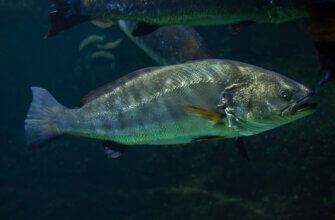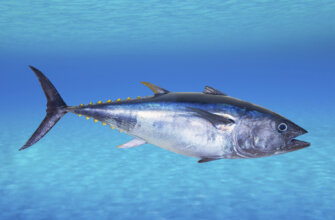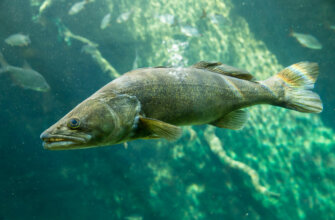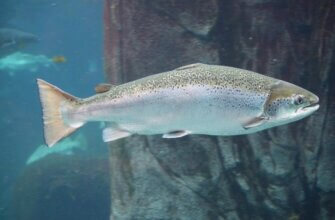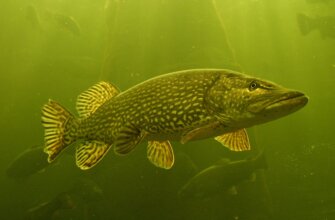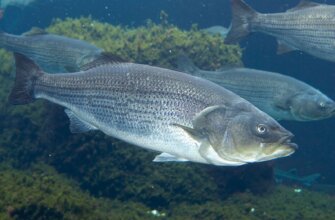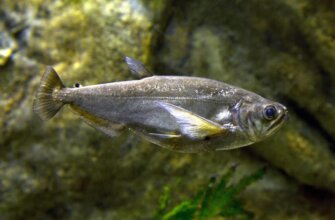The Golden Dorado, scientifically known as Salminus brasiliensis, is a species of freshwater fish that belongs to the family Characidae. It is also commonly referred to as the “Tiger of the River” due to its aggressive nature and striking appearance. Native to the rivers of South America, particularly in the Paraná and Paraguay basins, the Golden Dorado is highly sought after by anglers for its strength, acrobatic behavior, and powerful fighting abilities.
The Golden Dorado is characterized by its elongated body shape, which is streamlined and muscular, allowing it to swiftly navigate through the water. It has a large mouth filled with sharp teeth, well-suited for capturing prey. The body coloration of the Golden Dorado can vary, but it typically exhibits a brilliant golden or yellowish hue, hence its name. It often features black markings or spots along its body, which intensify as the fish matures. Additionally, its fins are usually colored in shades of red or orange.
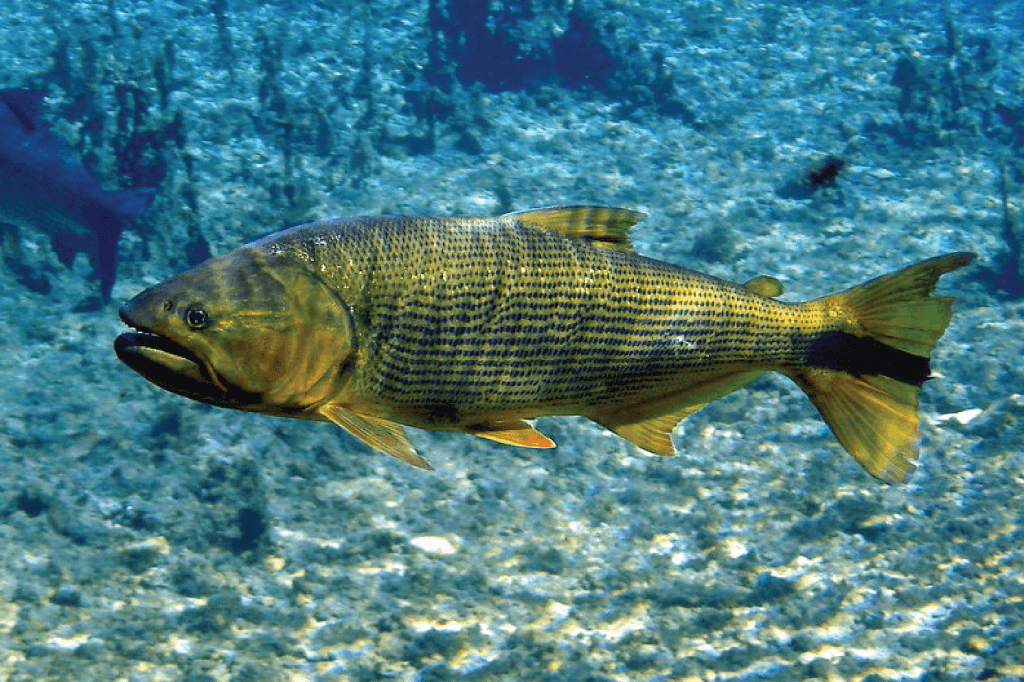
This species is an apex predator in its habitat and primarily feeds on smaller fish, crustaceans, and other aquatic organisms. Golden Dorados are known for their voracious appetite and aggressive feeding behavior, making them excellent game fish. Anglers typically target them using a variety of fishing techniques, including fly fishing, bait casting, and trolling. Due to their size and strength, catching a Golden Dorado can be a thrilling and challenging experience.
Conservation efforts have been implemented in some regions to protect the Golden Dorado population, as overfishing and habitat degradation pose threats to its survival. Sport fishing practices often prioritize catch-and-release to preserve the species and promote sustainable fishing practices.
Overall, the Golden Dorado is a captivating fish species known for its beauty, strength, and exciting angling opportunities. Its striking appearance and aggressive nature make it a prized catch among anglers who seek unforgettable fishing experiences in the rivers of South America.
Appearance
The Golden Dorado, or Salminus brasiliensis, has a distinct and captivating appearance.
Here are some details about its appearance:
- Body Shape. The Golden Dorado has an elongated and streamlined body, which allows it to move swiftly through the water. Its body is muscular and well-adapted for powerful swimming and quick maneuvers.
- Coloration. The most notable aspect of the Golden Dorado’s appearance is its vibrant coloration, which gives the fish its name. The body typically displays a brilliant golden or yellowish hue, often with variations and shades among individuals. This golden color is highly distinctive and stands out in freshwater environments.
- Markings and Spots. Golden Dorados often have black markings or spots along their body. These markings can vary in intensity and pattern, but they tend to become more pronounced as the fish matures. The black markings contrast against the golden background, adding to the fish’s visual appeal.
- Fins. The fins of the Golden Dorado are another notable feature. They are usually colored in shades of red or orange, creating a striking contrast with the golden body. The combination of golden body coloration and vibrant fins enhances the fish’s overall appearance.
Overall, the Golden Dorado’s appearance is a captivating blend of vibrant golden or yellowish body coloration, black markings or spots, and colorful fins. These visual characteristics contribute to its allure among anglers and make it an impressive sight in the rivers and freshwater habitats it inhabits.
Size and weight
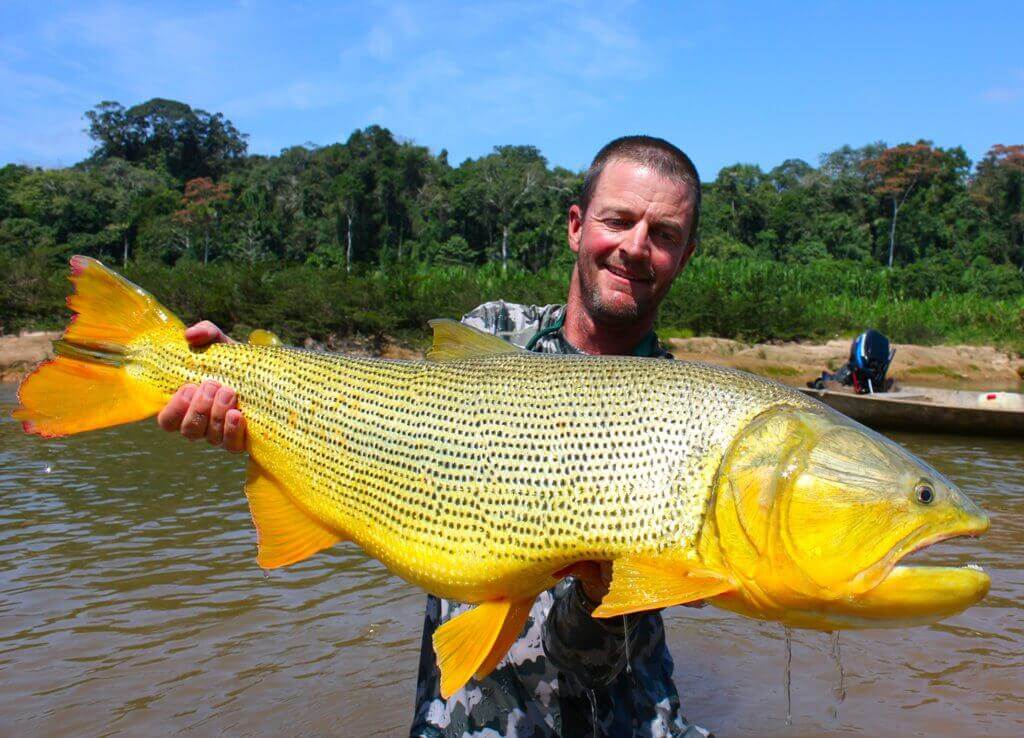
The Golden Dorado (Salminus brasiliensis) can vary in size and weight depending on factors such as age, habitat, and food availability.
Here are some general guidelines regarding the size and weight of this species:
- Length: Adult Golden Dorados typically range from 60 to 100 centimeters (24 to 39 inches) in length. However, larger individuals have been documented, and exceptional specimens can exceed these measurements.
- Weight: The weight of Golden Dorados can vary significantly. On average, adult individuals weigh between 5 to 25 kilograms (11 to 55 pounds). Larger specimens can weigh even more, with some reports suggesting weights of over 30 kilograms (66 pounds).
It is important to note that these size and weight ranges are approximate and can differ between individuals and populations. Factors such as the availability of prey, water conditions, and genetics can influence the growth and size of Golden Dorados. Additionally, different regions may have variations in average size and weight due to environmental factors and fishing pressures.
The size and weight of Golden Dorados contribute to their reputation as formidable game fish. Anglers seeking a thrilling fishing experience often target them for their impressive size, strength, and acrobatic behavior in the water.
Diet
The Golden Dorado (Salminus brasiliensis) is a predatory fish with a diverse diet. As opportunistic feeders, Golden Dorados are known to consume a variety of prey items.
Here are some common elements of their diet:
- Fish. Golden Dorados primarily feed on other fish. They are voracious predators and often prey on smaller fish species found in their freshwater habitats. This can include species like sardines, anchovies, tetras, and other small to medium-sized fish.
- Crustaceans. In addition to fish, Golden Dorados also feed on crustaceans. This can include crayfish, crabs, and shrimp. They use their sharp teeth and powerful jaws to crush and consume these crustaceans.
- Aquatic Invertebrates. Golden Dorados will also consume various aquatic invertebrates such as insects, insect larvae, and small crustaceans like prawns. These invertebrates provide a supplementary food source for the fish.
- Amphibians and Reptiles. On occasion, Golden Dorados may opportunistically prey on amphibians and reptiles, such as frogs and small reptiles that are present in their habitat.
It’s important to note that the specific diet of Golden Dorados can vary depending on the availability of prey and the specific ecosystem they inhabit. Their diet tends to be adaptable and opportunistic, allowing them to take advantage of different food sources as they become available.
As apex predators in their freshwater environments, Golden Dorados play a crucial role in maintaining the balance of aquatic ecosystems by regulating the populations of their prey species.
Behavior
The Golden Dorado (Salminus brasiliensis) exhibits several notable behaviors that contribute to its reputation as an exciting game fish.
Here are some key behaviors of the Golden Dorado:
- Aggression. Golden Dorados are known for their aggressive nature. They are apex predators in their freshwater habitats and display a fierce hunting instinct. When feeding, they exhibit swift and decisive strikes, often ambushing their prey with quick bursts of speed.
- Powerful Swimming. Golden Dorados possess a streamlined and muscular body, enabling them to navigate through the water with remarkable speed and agility. They are capable of rapid acceleration and can make acrobatic leaps when hooked, putting up an impressive fight for anglers.
- Feeding Behavior. Golden Dorados are opportunistic feeders, and their feeding behavior is marked by voracity. They often chase down and attack their prey, using their sharp teeth and strong jaws to capture and consume smaller fish, crustaceans, and other aquatic organisms.
- Migration. Golden Dorados are known to undertake seasonal migrations within river systems. They move between different sections of rivers, including upstream and downstream, in response to changes in water temperature, food availability, and breeding requirements.
- Breeding and Spawning. Golden Dorados typically migrate to specific spawning grounds during the breeding season. They exhibit courtship rituals and engage in aggressive territorial behaviors to attract mates and establish breeding territories.
- Solitary or Group Behavior. Golden Dorados can display both solitary and social behaviors, depending on the circumstances. They may be found hunting alone or in loose groups, particularly during feeding frenzies or when congregating around areas with abundant prey.
- Response to Fishing Techniques. Golden Dorados are highly sought-after game fish due to their aggressive behavior and strong fighting abilities. They respond well to a variety of fishing techniques, including fly fishing, bait casting, and trolling. Anglers often employ lures or flies that mimic the fish or prey items they feed on to entice strikes.
These behaviors collectively make the Golden Dorado an exciting species to target for anglers, providing exhilarating fishing experiences and challenging battles on the water.
Spawning
The Golden Dorado (Salminus brasiliensis) follows a distinct reproductive cycle and exhibits specific behaviors during the spawning season.
Here’s an overview of the spawning behavior of Golden Dorados:
- Breeding Season. The breeding season for Golden Dorados typically occurs during the warmer months of the year, often in spring or early summer. The exact timing can vary depending on the specific region and environmental conditions.
- Migration to Spawning Grounds. Golden Dorados undertake migratory movements to reach specific spawning grounds. They move upstream, navigating through rivers and tributaries, to find suitable breeding habitats. These spawning grounds are often located in shallow areas with gravel or rocky substrates.
- Courtship and Mating. Once the Golden Dorados reach the spawning grounds, courtship behaviors commence. Males engage in aggressive displays to attract females and establish dominance. This can include chasing, jaw locking, and pushing each other. Females select mates based on the males’ displays and fitness.
- Spawning Behavior. Golden Dorados are broadcast spawners, which means the female releases eggs into the water while the male fertilizes them externally. The spawning act involves the female releasing a large number of eggs into the water column, and multiple males simultaneously release sperm to fertilize the eggs. This behavior increases the chances of successful fertilization.
- Egg Development. After fertilization, the eggs are left to develop in the water. The specific duration of the egg incubation period can vary depending on water temperature and other environmental factors. Typically, it takes several days for the eggs to hatch.
- Fry and Juvenile Stage. Once hatched, the Golden Dorado fry emerge from the eggs. They are initially very small and vulnerable, and they seek shelter and feed on microscopic organisms and plankton. As they grow, they transition into a juvenile stage, where they begin to consume larger prey and develop their predatory instincts.
It’s worth noting that the Golden Dorado’s spawning behavior can be influenced by factors such as water temperature, water flow, and photoperiod. Protecting spawning habitats and maintaining healthy river ecosystems are important for sustaining Golden Dorado populations and their successful reproduction.
Fishing
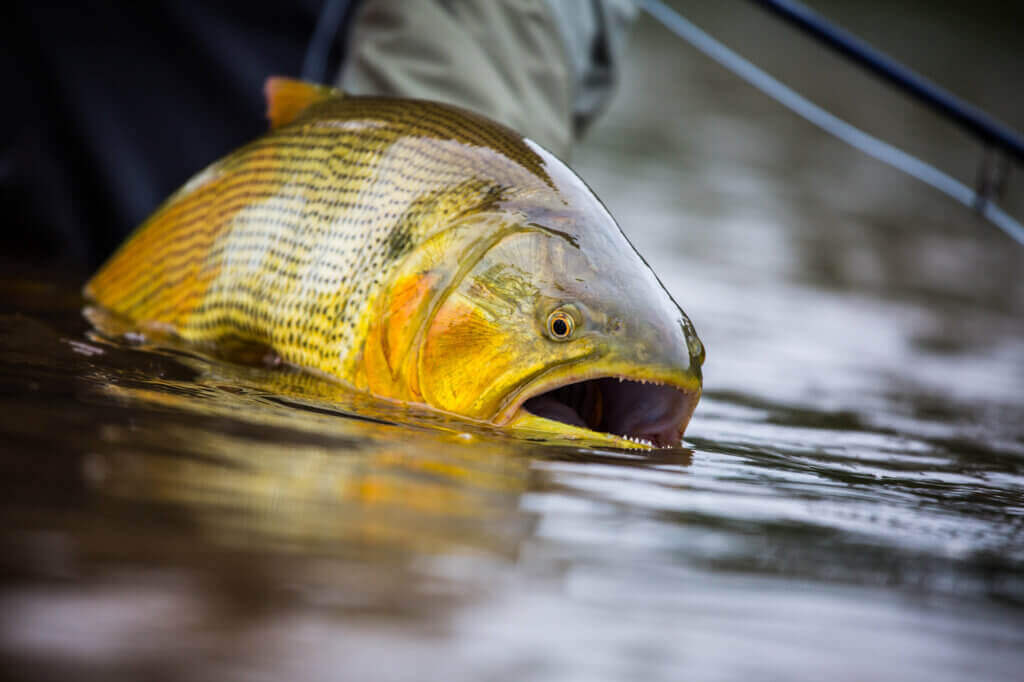
Fishing for Golden Dorado (Salminus brasiliensis) is a popular and thrilling activity pursued by anglers in the rivers of South America.
Here are some key aspects to consider when fishing for Golden Dorado:
- Location: Golden Dorados are primarily found in the rivers of South America, particularly in the Paraná and Paraguay basins. These rivers, such as the Paraná River in Argentina or the Paraguay River in Paraguay and Bolivia, offer excellent opportunities for Golden Dorado fishing.
- Techniques: Various fishing techniques can be employed to target Golden Dorado, depending on the angler’s preference and the specific fishing conditions. Some common techniques include:
- Fly Fishing: Fly fishing for Golden Dorado is particularly popular. Anglers use weighted streamers and large flies that mimic the fish or prey items Golden Dorados feed on. The technique involves casting the fly into likely holding areas, stripping it back to imitate a swimming prey, and enticing strikes.
- Bait Casting: Bait casting with lures is another effective technique. Anglers use a variety of lures, such as spoons, jerkbaits, and minnow imitations, to imitate the movements of smaller fish. Casting near structures or areas of active feeding can yield good results.
- Trolling: Trolling involves towing lures behind a moving boat. Anglers use diving plugs, spinnerbaits, or other lures that can be trolled at varying depths. This technique allows covering a larger area and searching for actively feeding Golden Dorados.
- Equipment: When targeting Golden Dorado, anglers typically use medium to heavy spinning or casting rods with a strong backbone to handle the fish’s power. Reels should have a smooth drag system and be capable of holding sufficient line capacity. Strong monofilament or braided line with a suitable pound test is recommended to withstand the fish’s aggressive runs and jumps. Using a wire or heavy fluorocarbon leader is advisable to prevent the fish’s sharp teeth from cutting the line.
- Fishing Seasons: Golden Dorado fishing can be successful throughout the year, but peak seasons often coincide with the fish’s spawning period or when water temperatures are optimal. Spring and summer months, when water temperatures are warmer, are generally considered prime seasons for targeting Golden Dorado.
- Catch and Release: To promote the conservation and sustainability of Golden Dorado populations, catch-and-release practices are highly encouraged. Anglers should handle the fish with care, use appropriate landing nets or gloves to minimize stress and injury, and release the fish quickly and gently.
It is important to familiarize yourself with local fishing regulations and guidelines to ensure compliance and contribute to the conservation of the species and its habitats.
Always prioritize safety, respect the environment, and enjoy the exhilarating experience of fishing for Golden Dorado responsibly.
Lures
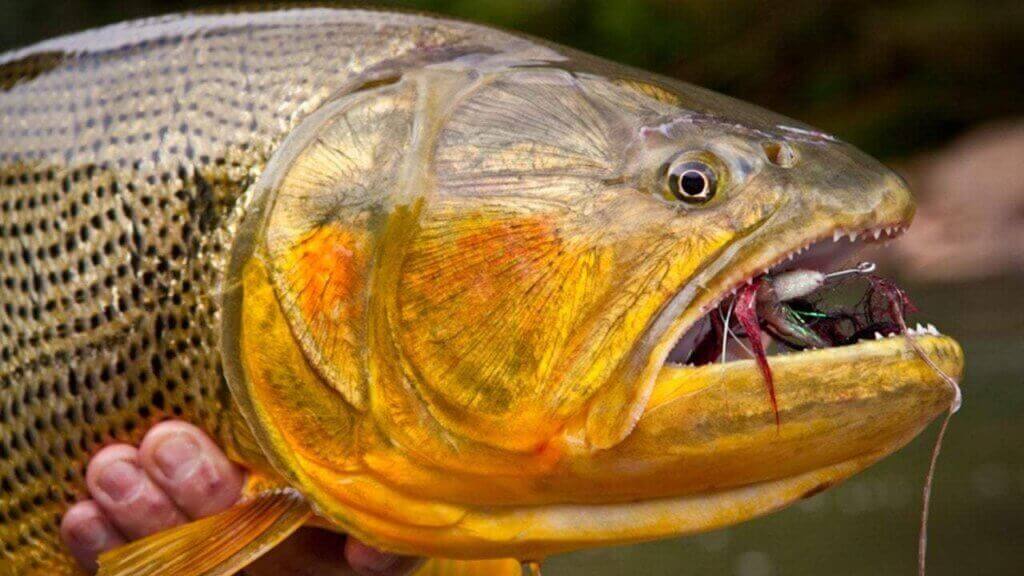
When targeting Golden Dorado, anglers often rely on a variety of lures to entice strikes.
Here are some popular lure types that are commonly used for Golden Dorado fishing:
- Streamers. Streamer flies are a favorite among fly anglers targeting Golden Dorado. These large, often brightly colored flies mimic baitfish or other prey items that the Dorado feed on. Streamers are typically tied with plenty of movement and can be stripped through the water to imitate fleeing prey.
- Spoons. Spoons are effective lures for Golden Dorado. These metal lures feature a concave shape that creates a wobbling action as they are retrieved through the water. Golden Dorado are known to be attracted to the flash and vibration produced by spoons, making them an excellent choice.
- Jerkbaits. Jerkbaits are hard-bodied lures that are designed to mimic injured or struggling baitfish. These lures have a suspending or floating action and are typically worked with a twitching or jerking motion to imitate wounded prey. The erratic movement can trigger aggressive strikes from Golden Dorado.
- Minnow Imitations. Various minnow imitations, such as crankbaits and swimbaits, are effective for Golden Dorado fishing. These lures closely resemble small fish and have a lifelike swimming action when retrieved. They can be effective for enticing Dorado to strike, especially when retrieved at varying speeds.
- Spinnerbaits. Spinnerbaits are versatile lures that consist of a spinner blade attached to a wire arm with a skirt and a hook. The spinning blade creates flash and vibration, attracting the attention of Golden Dorado. The skirt adds additional attraction and mimics the appearance of a small baitfish.
- Topwater Lures. Topwater lures can be exciting to use when Golden Dorado are actively feeding near the surface. Popper lures, surface walkers, and buzzbaits are examples of topwater lures that create splashes, ripples, or buzzing sounds to imitate prey struggling on the water’s surface.
It’s important to consider the size, color, and action of the lures based on the specific fishing conditions and the preferences of the Golden Dorado in your target area. Experimenting with different lure styles and retrieves can help you determine what works best on a given day.
Remember to adhere to local fishing regulations, practice catch-and-release when appropriate, and prioritize the conservation of Golden Dorado populations and their habitats.
Here are some examples of fishing lures commonly used for targeting Golden Dorado, along with their models and specifications:
- Fly Fishing Streamer:
- Model: Clouser Minnow.
- Specifications: Sizes #2 to #6, weighted pattern with lead or bead eyes, made with various colorful synthetic materials such as bucktail, flash, and rubber legs.
- Spoon:
- Model: Mepps Aglia.
- Specifications: Sizes #3 to #5, brass or stainless steel construction, with a spinning blade and a treble hook. Colors like silver, gold, or copper are popular choices.
- Jerkbait:
- Model: Rapala X-Rap.
- Specifications: Floating or suspending action, sizes around 10 to 12 cm (4 to 5 inches), made of durable plastic with realistic finishes, equipped with sharp treble hooks.
- Minnow Imitation:
- Model: Yo-Zuri Crystal Minnow.
- Specifications: Floating or suspending action, sizes around 9 to 11 cm (3.5 to 4.5 inches), realistic translucent or reflective finishes, durable plastic body, and sharp treble hooks.
- Spinnerbait:
- Model: Blue Fox Super Vibrax.
- Specifications: Sizes #3 to #5, brass or stainless steel blade(s) with colorful patterns or finishes, silicone skirt, and sharp treble hook(s).
- Topwater Popper:
- Model: Heddon Super Spook.
- Specifications: Length around 10 to 12 cm (4 to 5 inches), cupped mouth design for popping and splashing action, durable plastic body, and equipped with sharp treble hooks.
- Topwater Buzzbait:
- Model: Strike King Buzzbait.
- Specifications: Blade(s) designed to create a buzzing sound and surface disturbance, silicone skirt, durable body construction, and sharp single or double hook.
Remember that lure selection can vary based on factors such as water conditions, time of day, and specific preferences of the Golden Dorado in your fishing location. It’s always a good idea to consult with local anglers, fishing guides, or tackle shops for recommendations on effective lures for Golden Dorado in your target area.
Baits
When targeting Golden Dorado (Salminus brasiliensis), using live or natural baits can be effective in enticing strikes.
Here are some popular bait options for Golden Dorado fishing:
- Live Baitfish: Using live baitfish is a common and effective approach. Local baitfish species that are naturally present in the waters you’re fishing can be used. Popular choices include sardines, anchovies, shiners, or small native minnows. Hook the baitfish through the lips or back to allow it to swim naturally.
- Cut Bait: Cut bait refers to pieces of fish or fish fillets used as bait. Cut bait can attract Golden Dorado with its scent and movement in the water. Common options include chunks of fish like mullet, herring, or other local baitfish. Secure the cut bait on the hook to prevent it from easily coming off.
- Prawns/Shrimp: Golden Dorado are known to feed on crustaceans, so using fresh prawns or shrimp as bait can be effective. Thread the prawn onto the hook, making sure it is securely attached. You can also use prawn heads or tails to add scent to the bait.
- Crayfish: Crayfish, also known as crawdads or crawfish, are a natural prey item for Golden Dorado. Using live or freshly dead crayfish as bait can be productive. Hook the crayfish through the tail or under the carapace to allow it to move naturally in the water.
- Insects: In certain situations, Golden Dorado can be enticed by large terrestrial or aquatic insects. Grasshoppers, crickets, and large beetles are examples of terrestrial insects that can be used as bait. Aquatic insects like damselflies or dragonfly nymphs can also be effective when fished near the bottom.
When using live or natural baits, it’s important to check and adhere to local fishing regulations regarding the use of bait. Also, consider the ethical handling and treatment of live bait to ensure the welfare of the baitfish or other live organisms being used.
As with any fishing technique, it’s recommended to observe and adapt your bait choices based on the behavior and feeding preferences of Golden Dorado in your specific fishing location.
Rods
When targeting Golden Dorado (Salminus brasiliensis), it is important to use a fishing rod that can handle the fish’s powerful runs and jumps.
Here are some considerations when selecting a fishing rod for Golden Dorado:
- Rod Power and Action: Opt for a medium to heavy-power rod that can provide the necessary backbone and strength to handle the fish. A fast or extra-fast action rod is recommended to provide a quick and strong hookset.
- Length: A fishing rod between 7 to 8.5 feet in length is typically suitable for Golden Dorado fishing. The longer length helps with casting distance and control during the fight, especially in wide river systems.
- Material: Graphite or carbon composite rods are commonly used for Golden Dorado fishing. These materials offer a good balance of strength, sensitivity, and lightness, making them ideal for battling powerful fish.
- Handle and Grip: Look for a rod with a comfortable and non-slip handle grip. Cork or EVA foam handles are popular choices as they provide good grip even when wet.
- Guides: Choose a rod with high-quality guides that can withstand the strain of heavy lines and sudden pulls. Look for sturdy guides made of materials like stainless steel or titanium oxide.
- Line Weight and Lure Weight: Select a rod that matches the recommended line weight and lure weight for Golden Dorado. Typically, a rod with a line weight rating of 10-20 pounds and a lure weight range of 1/2 to 3 ounces should suffice.
- Quality and Durability: Ensure that the rod is well-built with quality components and has the durability to handle the aggressive nature of Golden Dorado.
It’s always recommended to consult with local anglers, fishing guides, or tackle shops familiar with Golden Dorado fishing in your target area. They can provide specific recommendations based on the fishing conditions and the preferences of Golden Dorado in your location.
Here are some examples of fishing rods that are commonly used for targeting Golden Dorado, along with their models and specifications:
- St. Croix Mojo Musky Rod:
- Model: MM76MHF.
- Specifications: Length – 7’6″, Power – Medium-Heavy, Action – Fast, Line Weight – 20-50 lbs, Lure Weight – 3/4-3 oz, Construction – Graphite, Handle – Cork, Number of Pieces – 1.
- G. Loomis E6X Casting Rod:
- Model: 854C JWR.
- Specifications: Length – 7’1″, Power – Heavy, Action – Fast, Line Weight – 14-25 lbs, Lure Weight – 3/8-1 1/2 oz, Construction – Graphite, Handle – EVA foam, Number of Pieces – 1.
- Shimano Expride Casting Rod:
- Model: EX1910HA.
- Specifications: Length – 7’11”, Power – Heavy, Action – Extra-Fast, Line Weight – 15-30 lbs, Lure Weight – 1/2-3 oz, Construction – Graphite, Handle – Cork, Number of Pieces – 1.
- Abu Garcia Veritas Casting Rod:
- Model: VTSC79-6.
- Specifications: Length – 7’9″, Power – Heavy, Action – Fast, Line Weight – 17-40 lbs, Lure Weight – 1/2-2 oz, Construction – 30-ton graphite, Handle – EVA foam, Number of Pieces – 1.
- Okuma Cedros CJ-65S Spinning Rod:
- Model: CJ-65S.
- Specifications: Length – 6’6″, Power – Heavy, Action – Fast, Line Weight – 15-30 lbs, Lure Weight – 1/2-2 oz, Construction – Graphite composite, Handle – Cork, Number of Pieces – 1.
- Daiwa Tatula XT Casting Rod:
- Model: TAT6101MHXB.
- Specifications: Length – 6’10”, Power – Medium-Heavy, Action – Extra-Fast, Line Weight – 10-25 lbs, Lure Weight – 1/4-1 oz, Construction – Graphite, Handle – EVA foam, Number of Pieces – 1.
These are just a few examples, and there are many other quality fishing rod options available for Golden Dorado fishing. It’s important to consider your specific fishing preferences and the fishing conditions you’ll be encountering when selecting a rod. Consulting with local anglers or visiting a tackle shop knowledgeable about Golden Dorado fishing in your target area can also provide valuable insights and recommendations.
Dishes
Golden Dorado is a highly sought-after game fish known for its delicious and firm flesh. It is often prepared and served in various dishes that showcase its flavors.
Here are a few popular dishes featuring Golden Dorado:
- Grilled or Pan-Seared Dorado. Grilling or pan-searing Golden Dorado fillets is a simple and delicious way to enjoy the fish. Season the fillets with salt, pepper, and your choice of herbs or spices. Cook them over medium-high heat until the flesh is opaque and flakes easily. Serve with a squeeze of fresh lemon or lime juice.
- Ceviche. Golden Dorado ceviche is a refreshing and tangy dish. The fish is marinated in citrus juices, such as lime or lemon, which “cooks” the fish. Combine diced Dorado fillets with chopped onions, tomatoes, cilantro, and a touch of chili for heat. Let the flavors meld together in the fridge and serve chilled.
- Breaded and Fried Dorado. Breaded and fried Golden Dorado is a popular preparation method. Coat the fish fillets in seasoned flour, dip them in beaten egg, and then coat them in breadcrumbs or cornmeal. Fry the fillets until they are golden brown and crispy. Serve with tartar sauce or a squeeze of lemon.
- Dorado Tacos. Dorado tacos are a tasty and versatile way to enjoy the fish. Season and grill or pan-fry the Dorado fillets until cooked through. Flake the fish into bite-sized pieces and fill warm tortillas with the fish, along with your choice of toppings such as salsa, avocado, shredded cabbage, and lime crema.
- Dorado Escabeche. Dorado escabeche is a traditional Latin American dish where the fish is marinated and then cooked in a tangy, vinegar-based sauce. Sauté onions, garlic, and bell peppers in olive oil, then add vinegar, spices, and herbs. Simmer the Dorado fillets in the sauce until cooked through. Serve the fish and sauce over rice or with crusty bread.
Remember to adhere to local fishing regulations, practice sustainable fishing practices, and ensure that your Golden Dorado is sourced legally and responsibly. Enjoy these dishes as a way to savor the flavors of this prized game fish.

